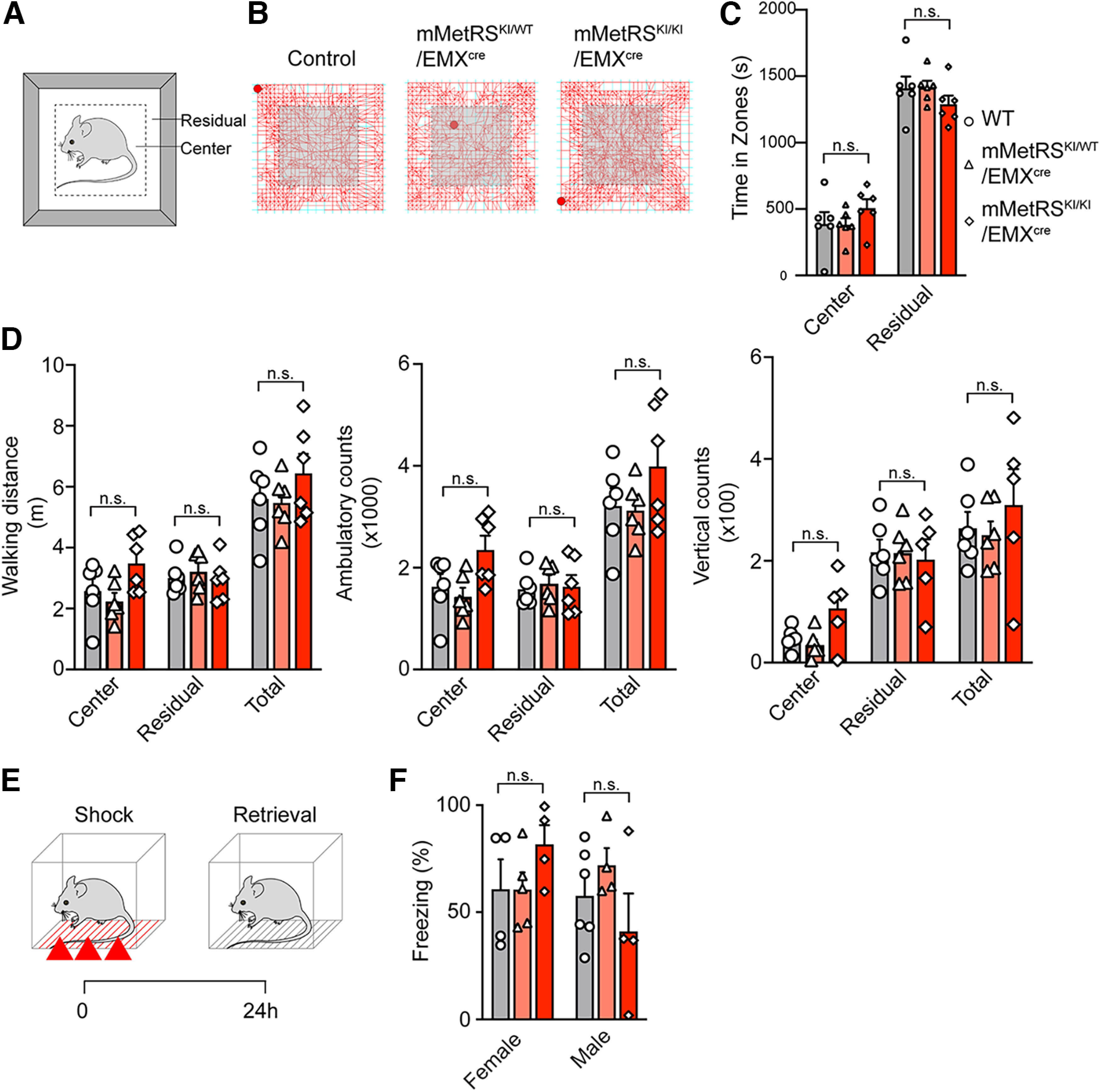Figure 3.

mMetRS expression in excitatory cortical neurons does not affect behavior. A–D, Open field tests of locomotor activity. A, Schematic of the open field arena, showing the center and peripheral (residual) regions of the arena. B, Representative foot tracks of mMetRSKI/WT/EMXCre mutants (middle) and mMetRSKI/KI/EMXCre mutants (right), and their control littermates (left). C, Quantification of time spent in central and peripheral zones. D, Quantification of cumulative walking distances, ambulatory counts, and vertical counts. E, F, Analysis of associative memory. E, Workflow for fear conditioning and contextual memory retrieval. Animals are exposed to a series of 3 footshocks and tested for memory retrieval assessed as freezing behavior in the same context 24 h later. F, Short- and long-term memory in males and females, assessed as a percentage of the time spent freezing. All graphs show individual datapoints and averaged values (mean ± SEM). A–D, N = 6 (3 males and 3 females). F, N = 4-6, paired t test with Welsh's correction. C, D, F. Gray, WT; pink, mMetRSKI/WT; red, mMetRSKI/KI. n.s., not significant.
